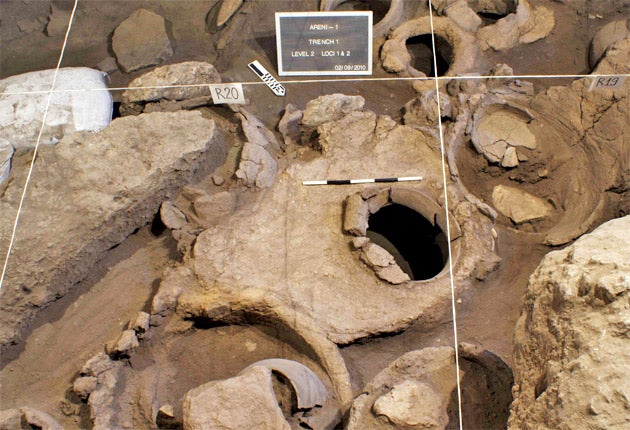World's oldest winery unearthed in Armenia

Archaeologists have unearthed the oldest wine-making facility ever found, using biochemical techniques to identify a dry red vintage made about 6,000 years ago in what is now southern Armenia.
The excavation paints a picture of a complex society where mourners tasted a special vintage made at a caveside cemetery, the researchers reported this week in the Journal of Archaeological Science.
"This is the world's oldest known installation to make wine," said Gregory Areshian, of the University of California, Los Angeles, who helped lead the study. Carbon dating showed a desiccated grape vine found near a wine press was grown around 4000 BC, his team reported. This makes it 1,000 years older than any other wine-making facility yet discovered, the research team – which is from Armenia, the United States and Ireland – reported.
The researchers found the world's oldest leather shoe, about 5,500 years old, at the same cave complex last year.
The wine press would have held a few gallons of juice and crushed grapes, probably working with the time-honoured technique of barefoot stomping, Mr Areshian said.
Chemical traces point to grape juice and, given the lack of refrigeration, the juice would certainly have been fermented into wine, Mr Areshian said. "We also know that still, in the villages in the vicinity, the culture of wine is very old and traditional," he said.
The rich, red wines produced there are merlots and cabernet sauvignons, he said.
The expedition, paid for in part by the National Geographic Society, also uncovered copper processing equipment. The cave complex, known as Areni-1, is in the Little Caucasus Mountains near Armenia's southern border with Iran.
The press itself is a shallow clay basin about 3ft in diameter, surrounded by grape seeds and dried-out grape vines.
The team found grave mounds nearby and obsidian tools, indicating some complicated trade was going on. The closest source of obsidian, a black glassy mineral, is 35 to 45 miles away, a three-day walk, Mr Areshian said. "This was a quite complex society with multiple communities."
Subscribe to Independent Premium to bookmark this article
Want to bookmark your favourite articles and stories to read or reference later? Start your Independent Premium subscription today.

Join our commenting forum
Join thought-provoking conversations, follow other Independent readers and see their replies